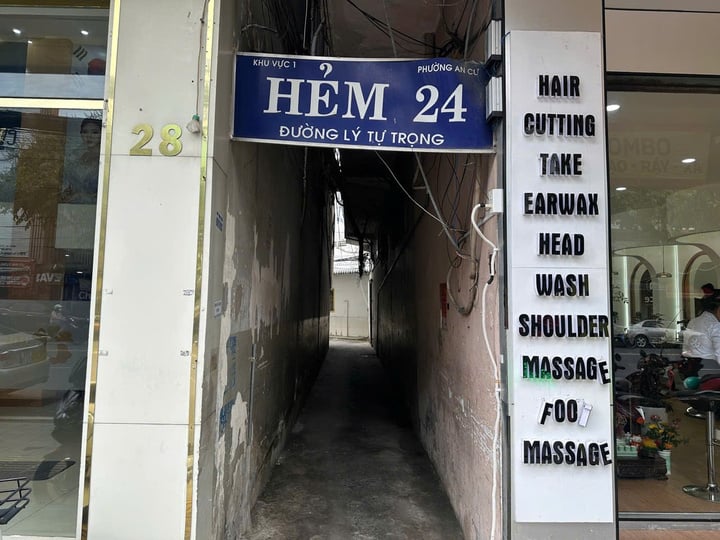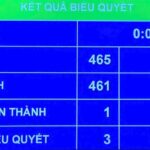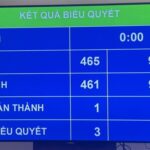In a recent interview with VTC News, Mr. Vo Xuan Truong, Chairman of the Mekolor and Great USA investment alliance, shared his aspirations for the high-speed North-South railway project. With a proposed investment of up to $100 billion, Mr. Truong assured that the alliance has secured the necessary funding from various sources, including investment funds, financial institutions, and global banks.
Public Skepticism and Corporate Confidence
According to the proposal submitted to Prime Minister Pham Minh Chinh and Deputy Prime Minister Tran Hong Ha, the high-speed railway project will be entirely privately funded by the Mekolor (Vietnam) and Great USA Inc. (USA) alliance.

Mr. Vo Xuan Truong, Chairman of the Mekolor and Great USA investment alliance. (Photo: NVCC)
The alliance will allocate $67 billion for the construction of the high-speed railway infrastructure, $10-20 billion for land clearance and resettlement, and an additional $13 billion for operational backup and system upgrades after the project’s completion.
Notably, the alliance pledges not to rely on government funding, guarantees, or special financial incentives. Furthermore, they plan to offer a 6-month free trial period for passengers to experience the service, which Mr. Truong considers a marketing strategy.
“We have thoroughly studied and analyzed the feasibility of this project for many years, and we are confident in our ability to invest,” emphasized Mr. Truong.
Addressing concerns about the company’s lack of experience in infrastructure and construction, Mr. Truong clarified the distinction between investors and contractors. As the investor, he focuses on the project’s feasibility, operation, and competition with other transportation options. The construction aspect, on the other hand, is a technical matter handled by the contracted construction companies.
“We have provided clear and detailed explanations in our proposal to the Prime Minister, along with financial proof. We don’t make empty promises; we have preliminary reports that evaluate investment progress, operation, and capital recovery. Everything is based on data and feasibility reports for each category and project we propose,” he added.

The small alley leading to the office of Mekolor Joint Stock Company, the recently established alliance between Mekolor and Great USA, which proposed a $100 billion investment in the North-South high-speed railway project. (Photo: H.X)
Regarding concerns about the alliance’s business model and potential real estate development along the railway line, Mr. Truong, a doctoral economist, emphasized his focus on macroeconomic calculations. He added that many online commentators might not fully grasp the intricacies of economic calculations, where the equation is not always as simple as 1+1=2.
Projected Capital Recovery within 10-15 Years
Mr. Truong expressed confidence in the capital recovery potential of the $100 billion investment in the high-speed railway project, anticipating a timeframe of 10-15 years from the start of operations.
He explained that with a population of 100 million, and assuming a travel cost of VND 1.1-1.2 million per trip (half the price of an airline ticket), the project could conservatively estimate at least 60 million trips per year, generating annual revenue of VND 3-3.5 billion.
Additionally, the proposal includes plans for 20 stations along the route in various provinces and cities. These stations will feature commercial chains, further boosting revenue. Mr. Truong asserted that no other commercial channel could offer such substantial profits and value.
“Our feasibility calculations show that we can recover the investment within 10-15 years. With the proposed 49-year operation period, we expect to generate profits for 30-35 years. Even if there are risks and the recovery takes longer, we still have a comfortable margin,” he stated.
While Mr. Truong chose to keep the identities of the alliance’s partners confidential, he assured that they are prominent financial groups known for their rigorous evaluation of investment projects. He also committed to engaging independent auditors from the project’s inception and shared his intention to list the project on the New York Stock Exchange.

The office of Mekolor Joint Stock Company, where Mr. Vo Xuan Truong serves as Chairman and Director, is located in a small alley on Ly Tu Trong Street, An Cu Ward, Ninh Kieu District, Can Tho City. (Photo: H. X)
Addressing concerns about the company’s scale, with only four employees and a chartered capital of VND 1 billion, Mr. Truong remained unfazed. He explained that the company’s registered capital reflects his personal investment and is not indicative of the alliance’s financial capabilities.
The capital for the high-speed railway project, he clarified, will come from the alliance’s fundraising efforts through the issuance of convertible preferred shares to financial institutions. Regarding government concerns, he assured that financial proof had been provided to the relevant authorities.
“If anyone doubts our financial capabilities, they can request the information from the Government Office, to which I have submitted all the necessary documents, including proof of financial capacity. However, I am not obligated to disclose this information publicly to protect the privacy of our partners, and it is not within my responsibility to do so,” Mr. Truong stated.
When asked about the company’s current operations, Mr. Truong confirmed that the company is performing well and successfully venturing into the technology sector, with multiple companies in its ecosystem contributing to its growth. While the office is located in Can Tho, Mr. Truong resides in Ho Chi Minh City.
Mr. Truong remained unfazed by media reports highlighting the company’s modest scale and capital, stating that the alliance is not seeking funds but is, in fact, in the process of investing and disbursing funds for the project.
He emphasized that the proposed $100 billion investment is not merely a figure on paper but the result of a cross-border, post-banking financial structure established over many years, backed by legal documents and financial confirmations. The proposal, along with the financial proof, was officially submitted to the Prime Minister and Deputy Prime Minister on June 3rd.
“To those who question our capabilities based solely on chartered capital, let us be clear: if you have never designed a cross-border financial structure, please refrain from using chartered capital as the sole criterion for evaluating a global financial system. We have never boasted about our account balances. We only publicize the mechanism of operating with real capital, real guarantees, real partners, and real risk management,” Mr. Truong asserted.
“If you cannot differentiate between statutory capital and global credit structure, you are not in a position to comment on this proposal,” he concluded.
The Congressional Guide to Overhauling the Machinery of Government Post-Administrative Restructuring
The Standing Committee of the National Assembly has issued detailed guidelines on the organization and operation of the National Assembly delegation and the People’s Councils at all levels following the merger of provinces and the elimination of the district level, as well as the reorganization of communal-level administrative units.
“Vietnam Offers to Sweeten the Deal for US Goods and Seeks Reciprocal Steps”
“Vietnam consistently engages in negotiations with the United States, striving for a bilateral agreement that respects sovereignty, self-governance, and political systems. The agreement should also aim for a harmonious balance of interests, aligning with international commitments and the developmental levels of both nations.”
The Cash Crown Competition: VIC Takes the Lead, VGI in Hot Pursuit
The Vietnamese stock market witnessed a fierce competition between VIC and VGI in the race for the cash crown in Q1. With a narrow margin, VIC took the lead over VGI, pulling ahead by just 350 billion VND.





















